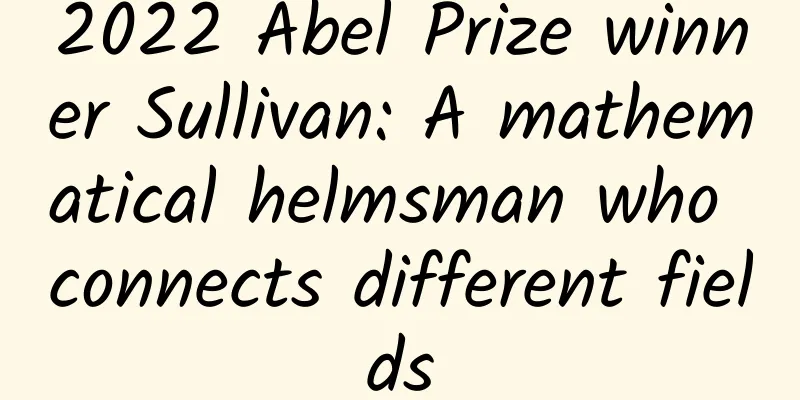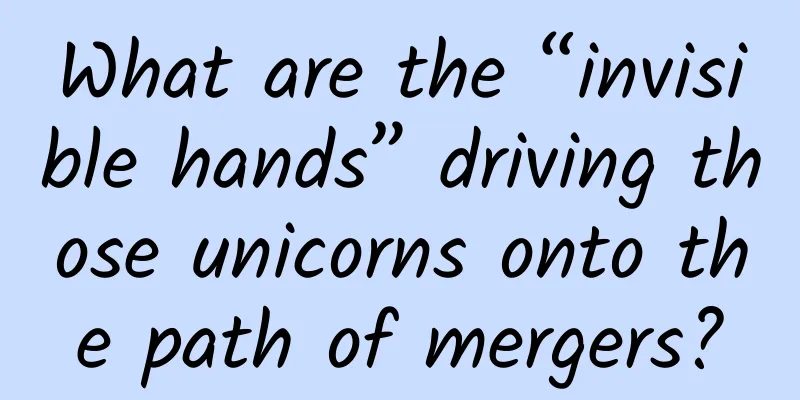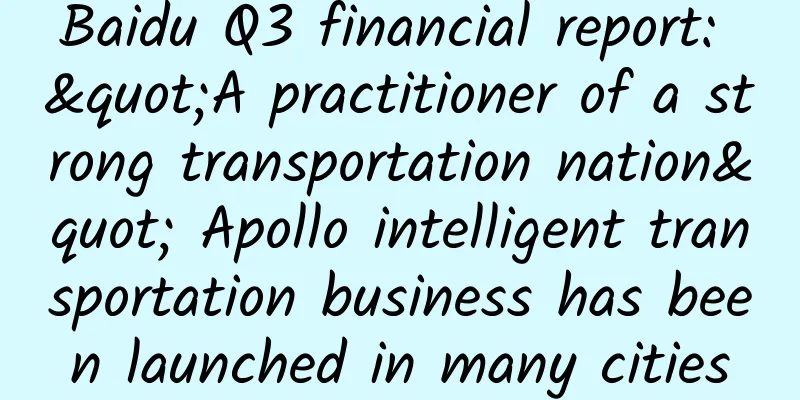2022 Abel Prize winner Sullivan: A mathematical helmsman who connects different fields

|
The 2022 Abel Prize was awarded to American mathematician Dennis Parnell Sullivan for his "pioneering contributions to topology in the broadest sense, especially in algebra, geometry and dynamics". Mathematical master Sullivan is one of the most influential topologists today. He has made fundamental contributions to many branches of topology and has also made great achievements in other fields of mathematics. His award is well deserved. Over the age of 80, Sullivan is still on the road of mathematical exploration. Along the way, many friends and mathematical masters have influenced him, and he has become the helmsman of mathematics like a "driver" who leads the direction. Written by | Ni Yi (Professor of Mathematics at California Institute of Technology) Simmons' driver When I was a child, I read a story like this: After Einstein became famous, he was often invited to give speeches at various universities. Once, his driver said to Einstein: "I have listened to your speeches so many times that I can give the speeches myself. I can give the speeches for you next time!" So Einstein really asked his driver to pretend to be him and he pretended to be the driver. The driver gave a very successful speech, but after he finished speaking, someone asked a question in the audience, and of course the driver could not answer it. The driver suddenly had an idea and pointed at Einstein and said: "This question is too simple, even my driver can answer it!" Einstein then went on stage and answered the question. This story is of course fictional, but it is widely circulated and is definitely not made up by the Chinese community. More than a decade ago, I attended an academic lecture by James Simons (1938-), a famous mathematician and Wall Street tycoon. Simons told this story at the beginning, and then he said: "If you have any questions today that I can't answer, just ask my driver..." The "driver" Simons was referring to was Dennis Parnell Sullivan (1941-) in the audience. In that report, Simons talked about his work with Sullivan on differential cohomology. The so-called "ask the driver" was just a self-deprecating joke to liven up the atmosphere. Before entering Wall Street, Simons was already a first-class mathematician. He won the Veblen Prize, the highest award in geometry and topology, in 1976. The Chern-Simons theory he completed in collaboration with Mr. Shiing-Shen Chern (1911-2004) plays a very important role in geometry, topology and theoretical physics. The last paper Simons published before leaving academia was a classic document in the field of "differential cohomology". More than 20 years later, Simons returned to mathematical research and naturally continued his work, co-authoring several important papers with his colleague Sullivan. Simons is extremely smart and has a very broad vision. Before leaving academia, he had published less than ten papers in total, and his collaborators were all master mathematicians. After returning to mathematical research, his "driver" Sullivan, who collaborated with him, is a master of mathematics and has won numerous honors. Sullivan's latest award was the Abel Prize, the highest award in mathematics, awarded by the Norwegian Academy of Science and Letters on March 23, 2022. Sullivan | Source: Stony Brook University, State University of New York Sullivan deserves the Abel Prize. He is one of the most influential topologists in the past half century and has made fundamental contributions to many branches of topology. But his work is not just about topology, it also includes dynamical systems, differential geometry, mathematical physics, and more. The tools he uses in his research are extremely extensive, coming from different fields such as algebra, number theory, geometry, analysis, and theoretical physics. The Abel Prize citation said that the award was "in recognition of his pioneering contributions to topology in the broadest sense, especially in algebra, geometry, and dynamics", which accurately summarizes Sullivan's research style. The leader at the helm Sullivan studied at Rice University as an undergraduate. His initial major was chemical engineering. After learning the Riemann mapping theorem in complex analysis in a mathematics class, he was deeply shocked and decided to switch to mathematics. He received his doctorate from Princeton University in 1966, with William Browder (1934-). After graduation, he worked briefly at the University of Warwick in the UK, the University of California, Berkeley, the Massachusetts Institute of Technology, and the University of Paris-Sud. Sullivan served as a tenured professor at the International Institute for Advanced Studies in Science (IHÉS) in France from 1974 to 1997, and has been a professor at the State University of New York at Stony Brook since 1996. Since 1981, he has served as an adjunct Einstein Professor at the Graduate School of the City University of New York. At the City University of New York, Sullivan organized the famous Einstein Lecture Seminar, inviting mathematicians from all over the world to give lectures. There was no time limit for this seminar, and the audience could ask questions at will. A lecture would normally last more than three hours, and the longest record was six and a half hours. Reports with Sullivan are never dull because he always sits in the front row and asks questions almost every time. At a conference I attended, a speaker did not come in person due to a time conflict, but only delivered a speech through a pre-recorded video. However, there was a problem with the sound system at the conference site, and the effect was very poor. In this case, most of the participants left early. Only a few dozen people stayed to listen to the lecture, including Sullivan. He still sat in the first row, watching the video with great interest, even though it was impossible to ask questions. Sullivan was very friendly to young people and often generously shared his ideas. When I was a doctoral student, I was hitchhiking after a meeting and took a car with him. I happened to be using a theorem about leaf structures that Sullivan had proposed in the 1970s, but I needed a stronger version, so I took the opportunity to ask him if this stronger version was correct. Sullivan immediately told me some of his ideas and suggested that I try to prove it. Due to my personal limitations, I didn't quite understand what he said, but I could feel his enthusiasm and frankness. This was one of the few personal contacts I had with him. Sullivan is not stingy with his praise for his juniors. One incident that impressed me was at a conference when Mohammed Abouzaid gave a talk on the conjecture of neighboring Lagrangian manifolds. After the talk, Sullivan told the host that he had a comment. Taking the microphone, Sullivan only said one exclamation: "Wow!" This was the most unusual praise for a speaker I have ever witnessed. In 2011, a meeting was held in Stone Brook to celebrate Sullivan's 70th birthday. Such meetings in the mathematics community usually last a week at most, but Sullivan was involved in too many fields and his influence was too far-reaching, so his birthday meeting lasted ten days. According to the arrangement, a large banquet would be held at Simons' home on the second to last night. All participants would gather outside the venue and go there together by car. As a result, by that afternoon, there were many new faces around the venue. Many of them did not look like mathematicians, and most of them were relatives and friends of the participants, who wanted to eat and drink together and see the billionaire's mansion. The number of people who were going to the banquet was conservatively estimated to be more than twice the number of regular attendees, which put a lot of pressure on the organizers. Apart from other things, the long limousines arranged in advance were far from enough. After the last report in the afternoon, a secretary came to the stage and said that there were too many people and it was impossible to accommodate all of them. In order for Mr. Simmons to hold banquets for everyone in the future, this time the secretaries had to screen them and only those they approved could get on the bus. Naturally, many people were very disappointed, but they also understood the organizers' concerns. At this time, Sullivan looked grim, picked up his phone, and walked out of the venue while talking on the phone. After a while, Sullivan returned to the venue and waved his hand: "No problem, everyone can go!" Given Sullivan's style, he probably called Simmons directly and asked him to agree to expand the scale of the banquet. In the end, the organizers sent many more vehicles and allocated more manpower and material resources to make the banquet a success and to make the guests and hosts happy. It can be said that Sullivan has the temperament of a leader. He is not only outstanding in academics, but also has a leadership aura in personality. From this perspective, Simons's description of Sullivan as a "driver" is not entirely a joke. He is a well-deserved helmsman in the mathematics world. Rational Homotopy Theory Sullivan's earliest work was in very pure topology. In his doctoral dissertation, Sullivan greatly developed the theory of surgery in topology, and used this tool to transform the "master conjecture" (Hauptvermutung) in combinatorial topology into the calculation of specific cohomology classes. This 200-page doctoral dissertation was not formally published in an academic journal. Sullivan only published a 3-page research report in the Bulletin of the American Mathematical Society, which won him the Veblen Prize in 1971. (According to the Veblen Prize award rules, the winning paper must have been published in a formal journal in the past six years. Sullivan's actual award-winning work was included in the doctoral dissertation that was not formally published, so the award was for the published research report.) During Sullivan’s doctoral dissertation defense, committee member Norman Steenrod (1910-1971) asked, “Your theory is great, but how do you calculate these cohomology classes?” Sullivan didn’t know the answer at the time and could only complain, “No one has asked the same question about the Hirsch-Mazur smoothing theory!” Sullivan did not record Stingrod's reaction at the time, but he was clearly dissatisfied with the answer. On the subsequent ship voyage to England, he pondered the problem, at one point throwing his notes into the sea in despair. He eventually got a partial answer, which inspired one of his most important works: rational homology theory. There are two basic invariants in topology: homology group and homotopy group. Homology group has ready-made algorithms to calculate, but homotopy group is very difficult to calculate, and there is no general calculation method. In 1951, French mathematician Jean-Pierre Serre (1926-) developed the "spectral sequence" method and used it to calculate the homotopy group of rational coefficients of the sphere (abbreviated as rational homotopy group). Serre won the 1954 Fields Medal for this, and is the youngest winner so far. Searle's work reminds us that the calculation of rational homotopy groups is much simpler than that of general homotopy groups. Around 1969, Sullivan and Quillen (Daniel Quillen, 1940-2011, 1978 Fields Medal winner) established rational homotopy theory, making the calculation of rational homotopy groups possible. Sullivan's method is different from Quillen's and is generally considered to be more suitable for calculation. According to Étienne Ghys, a member of the French Academy of Sciences, Sullivan's creation of rational homotopy theory is "a wonderful work of art" and "a great moment in the history of mathematics." In the process of establishing rational homotopy theory, Sullivan combined ideas and methods from many different mathematical fields. He generalized the differential form of differential manifolds to spaces without differential structures and established the corresponding de Rham theorem. He applied the ideas of "localization" and "completeness" in algebraic number theory and algebraic geometry to topological space, and introduced the "absolute Galois group" that often appears in number theory into topology. Using this very algebraic method, he independently proved the Adams conjecture in homotopy theory. (Quillenn also proved the Adams conjecture using a different method.) Sullivan's MIT lecture notes | Source: Amazon Most of Sullivan's work on rational homology theory initially existed only in the form of lecture notes, and only a small part was published as a paper in a journal. His 1970 "MIT Lecture Notes" circulated in the circle for more than 30 years, and was not compiled into a book until 2005. This phenomenon is not uncommon among mathematical masters. Sullivan was at the peak of his creativity at the time and had a lot of new ideas. For such a top mathematician, instead of spending time and energy to carefully carve out his own papers and answer various questions from reviewers, it is better to open up new areas and leave the details to others to fill in. Doing so will make a greater contribution to mathematics. Friendship between masters In 1974, Sullivan delivered a plenary report entitled "Inside and Outside of Manifolds" at the International Congress of Mathematicians. He pointed out that after the establishment of rational homotopy theory, the topological classification of high-dimensional simply connected manifolds has been nearly completed. The next focus should be on research directions such as dynamical systems and foliation structures that can better reflect the internal geometric properties of manifolds. He personally practiced and studied the geometric properties of manifolds in the next twenty years, including dynamical systems, hyperbolic geometry, group actions, etc. His work in this area was largely influenced by William Thurston (1946-2012, winner of the 1983 Fields Medal). Thurston in his youth | Source: philosophyofscienceportal.blogspot.com In 1971, Sullivan visited Berkeley. One day, he went to listen to a report on two-dimensional dynamical systems. After the speaker finished speaking, the senior mathematicians sitting in the front row had no objections, but a young man with a big beard and long hair in the back row stood up and said that the algorithm used in the report was incorrect. Then the young man walked up to the podium and drew an example on the blackboard. Applying the algorithm in the report to this example, the graph became more and more complicated, so that the algorithm could not be established. This young man was Thurston, who was still a graduate student at the time, while Sullivan was already a Veblen Award winner and a top topologist in the world. Despite this, Sullivan still admired Thurston's geometric intuition. A few days later, Sullivan was invited by Berkeley graduate students to paint a mural in the building. Thurston was painting a very complicated curve on the wall, and he asked Sullivan: "Do you think this is worth painting?" Sullivan asked, "What is this?" "A simple closed curve." "You better bet it's entertaining enough!" Thurston and Sullivan then spent hours painting the mural, which remained in Berkeley's mathematics building for nearly forty years before being covered over. Murals painted by Thurston and Sullivan | Source: Notices of the AMS A simple closed curve is a closed curve with only one branch, but it can be very complex. Even top topologists like Sullivan did not realize this at the time. Thurston explained to Sullivan how to construct such a curve and how to draw it beautifully. For Sullivan, this was undoubtedly a baptism of geometric thinking. Sullivan said that several years later, the reason why he could understand Thurston's work on surface mapping without much effort was because he had learned the ideas in the hours of painting the wall. In the late 1970s, Thurston introduced hyperbolic geometry into the study of low-dimensional topology, linking low-dimensional topology with many fields such as hyperbolic geometry, Klein group, Teichmuller theory, and complex dynamical systems. Sullivan did a lot of basic work in these related fields. His most important contribution was not proving specific theorems, but proposing a fundamental guiding principle from a philosophical perspective - "Sullivan's Dictionary". The earliest version of Sullivan's dictionary, from his original paper Sullivan discovered that Klein groups and complex dynamical systems have many similarities, and many concepts and theorems can be matched one to one. Using this correspondence, known as the "Sullivan dictionary," one can try to analogize existing concepts and theories in one field to another, or use the ideas and methods in one field to solve unknown problems in another field. The "Sullivan dictionary" has spawned a large number of studies in Klein groups and complex dynamical systems, and has been successfully used to solve many difficult problems, profoundly changing the face of these two disciplines. Sullivan himself used this principle to solve a 65-year-old problem left by Fatou and Julia, the founders of complex dynamical systems. Thurston's geometrization program was also deeply influenced by Sullivan's dictionary. The Mandelbrot set is an important object in the study of complex dynamical systems and also has a place in Sullivan's dictionary. Source: Wikipedia Like Sullivan, Thurston's most important work was not published, but only existed in the form of a Princeton University lecture note. In this lecture note, Thurston rediscovered the concept of "circle packing". But the mathematics contained in Thurston's lecture note was so rich that circle packing was not taken seriously by the academic community at first. In a speech in 1985, Thurston conjectured that circle packing could be used to give a simple constructive proof of the Riemann mapping theorem in complex analysis. Thurston's conjecture was proved by Burt Rodin and Sullivan in 1987. From this point on, circle packing received a lot of attention and gradually developed into an independent field with many applications in computer visualization. An example of circle filling. The circle filling inside the triangle and the circle in the figure has the same combination pattern, but the circles used inside the triangle are the same size, while the circles inside the circle are of different sizes. 丨Image source: Notices of the AMS The friendship between Sullivan and Thurston lasted for more than 40 years, and both benefited greatly from it. After Thurston died of illness, Sullivan wrote a memoir in one go, telling eleven stories that happened during their relationship. Influence from physics Since the 1980s, physics has had an unexpected impact on pure mathematics research. The most famous example in this regard is Simon Donaldson (1957-, 1986 Fields Medal winner)'s use of gauge field theory to construct the invariants of four-dimensional differential manifolds, and the impact of string theory developed by physicists such as Edward Witten (1951-, 1990 Fields Medal winner) on many areas of mathematics. In this great trend triggered by physics, Sullivan also stood at the forefront of the times. In 1989, Sullivan collaborated with Donelson to generalize Donelson's theory to four-dimensional quasi-conformal manifolds, which was one of his few topological works in the 1980s. In 1999, inspired in part by Witten, Sullivan and his current wife, Moira Chas, defined "string topology" and discovered the above Lie algebraic structure. The name "string topology" implies that its ideas come from string theory. (The simplest example of string topology was discovered earlier by Thurston's student William Goldman.) String topology has a wide range of applications in symplectic geometry and quantum field theory, and is currently a hot topic of research. Sullivan is a mathematician who has an open mind about physics and is interested in many areas of physics, not just basic theories like gauge field theory and string theory. His work on the Feigenbaum constant is an example. In 1975, Mitchell Feigenbaum (1944-2019), a physicist at Los Alamos Laboratory, discovered "period-doubling bifurcation" through numerical calculations while studying the iteration of single-peak mapping. This is an important chaos phenomenon with wide applications in many branches of physics. Feigenbaum won the 1986 Wolf Prize in Physics for this. The bifurcation diagram of a single peak mapping. The limit of the ratio of the length of each bifurcated fork to the length of the next bifurcated fork is the first Feigenbaum constant, and the limit of the ratio of the width of each bifurcated fork to the width of the next bifurcated fork appropriately selected is the second Feigenbaum constant. Source: Wikipedia In the period-doubling bifurcation, two constants 4.669201... and 2.502907... appear, which are called the first Feigenbaum constant and the second Feigenbaum constant respectively. Feigenbaum and others used the "renormalization" method commonly used by physicists to prove with the help of computers that these two constants have the same value in a large class of dynamical systems, and are universal constants like π and e. Geometrically speaking, this means that the bifurcation diagrams have similar shapes in these dynamical systems. However, from a mathematician's point of view, the physicists' proof is not rigorous, and the assistance of computers makes it difficult for humans to truly understand its meaning. Many dynamical system experts began to look for a purely mathematical proof of the universality of the Feigenbaum constant. Sullivan played a key role in this. He used Teichmuller theory to give an outline of a mathematical proof and proved the convergence of the renormalization mapping. His student Curtis McMullen (1958-, 1998 Fields Medal winner) proved that this problem in Sullivan's dictionary corresponds to Thurston's hyperbolic structure existence theorem on the mapping torus. Finally, Sullivan's colleague at Stony Brook, Ukrainian mathematician Mikhail Lyubich (1959-), gave the first mathematical proof of universality in 1999. Sullivan has always been very interested in fluid mechanics. When he was an undergraduate at Rice University, he often interned at oil companies during the summer vacation, and his job was to solve the linearized Navier-Stokes equations with computers. Over the past three decades, Sullivan has thought about fluid mechanics, especially the Navier-Stokes equations, from the perspective of algebraic topology. This is an overly complex field, and although Sullivan has published some papers, some of which have been published in top journals, he has not yet achieved any satisfactory interim results. In his own words, he has understood more and more about this topic, but he is still trying. People often say that mathematics is a subject for young people. But Sullivan, who is in his 80s, is still active in scientific research, actively learning the latest developments in various fields and trying to explore more research directions. For Sullivan, there is no forbidden area for mathematical exploration, and there is no end. Special Tips 1. Go to the "Featured Column" at the bottom of the menu of the "Fanpu" WeChat public account to read a series of popular science articles on different topics. 2. Fanpu provides a function to search articles by month. Follow the official account and reply with the four-digit year + month, such as "1903", to get the article index for March 2019, and so on. Copyright statement: Personal forwarding is welcome. Any form of media or organization is not allowed to reprint or excerpt without authorization. For reprint authorization, please contact the backstage of the "Fanpu" WeChat public account. |
Recommend
Pay tribute to the power of "her" in scientific innovation and listen to the scientific research stories of 4 female science and technology workers
On International Women's Day, we have selecte...
Goodbye 16GB iPhone: Is it the capacity or the strategy that has changed?
Consumers have just jumped out of the joy of final...
The next stop for telecom operators: building Internet TV?
At present, the composition of the color TV marke...
Marketing promotion routines leveraging the Qixi Festival!
The annual Chinese Valentine's Day is approac...
In the era of technology finance, the service-oriented concept leads the future of securities AI
Nowadays, under the general trend of consumption ...
32 questions and answers about Xiaohongshu promotion
This time, we have sorted out some problems that ...
The secret to increasing fans and realizing monetization through refined operations!
Although traffic and fans are very important, wit...
Installation requires 6 floppy disks The first version of Windows is 25 years old
In the past two days, Windows 10 users have been ...
This smell is really "nan"! The heather flower, which is on the hot search list, is actually full of treasures
There is a popular saying: "If you can't...
Marketing Artificial Intelligence Institute: AI for Retail Leaders
Artificial intelligence continues to transform ev...
Game Special Effects Art Design Course Beginner Class
Course Catalog ├──Lesson 8 - Drawing Elements - P...
Dismantling Keep’s user operation system
As a leader in online fitness course apps, Keep h...
Didn't understand Oppenheimer? Here are some hidden Easter eggs!
Have you seen Nolan's Oppenheimer? Even if yo...
How to double your weight loss effect in winter? These three methods are not advisable!
Winter is cold, and people especially want to eat...
Douyin Dou+ Super Detailed Advertising Skills Strategy
What exactly is DOU+? However, unlike information...









